As some of you may already know, Max grew up in Costa Rica. His family moved here when he was 2.5 years old, and they lived here full-time until he was 11. Over the years, they lived in a few different spots and visited many parts of Costa Rica before it became the tourist destination that it is today.
*This post may contain affiliate links, as a result, we may receive a small commission (at no extra cost to you) on any bookings/purchases you make through the links in this post. As an Amazon Associate, we earn from qualifying purchases. Read our full disclosure
Today, Costa Rica is a very different place than it was back in the 80’s and 90’s. It is safer and easier to get around, it has better communication (cell phones and internet), and an electrical grid that reaches almost everyone.
But it’s nice to see that despite the development across the country and the influx of tourists from all over the world, Costa Rica has managed to maintain its diverse flora and fauna, and rich culture.
To give you a little taste of the country we have come to know and love, we wanted to share some interesting Costa Rica facts that you may or may not know about its biodiversity, customs, and traditions. You won’t find a lot of this stuff in the guidebooks!
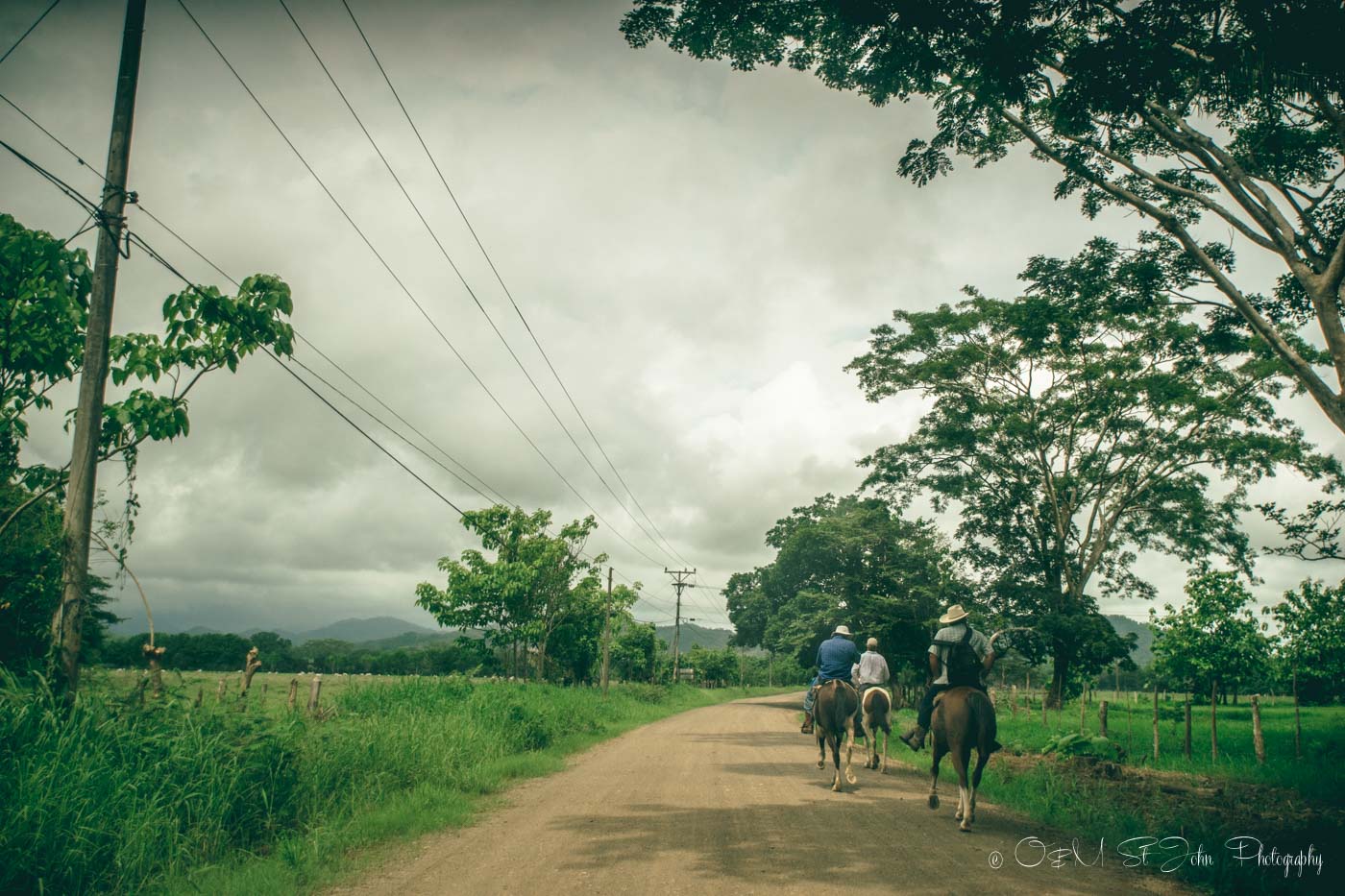
Traveling Soon? Here is a list of our favourite travel providers and accessories to help get you ready for your upcoming trip!
Basic Facts About Costa Rica
If you are planning to visit Costa Rica for the first time, then here are a few of the basic but interesting facts about Costa Rica you should know before you arrive:
Tico’s/Tica’s
Costa Ricans refer to themselves as “Ticos” (males) and “Ticas” (females). This derives from the habit of adding –tico to a word to imply something is small, like they do in many other Spanish-speaking countries.
Now, that’s not to say Costa Rican people are small, but it’s an affable term that’s pretty much-become part of the official language at this point. The national soccer team is even referred to as the “Ticos”!
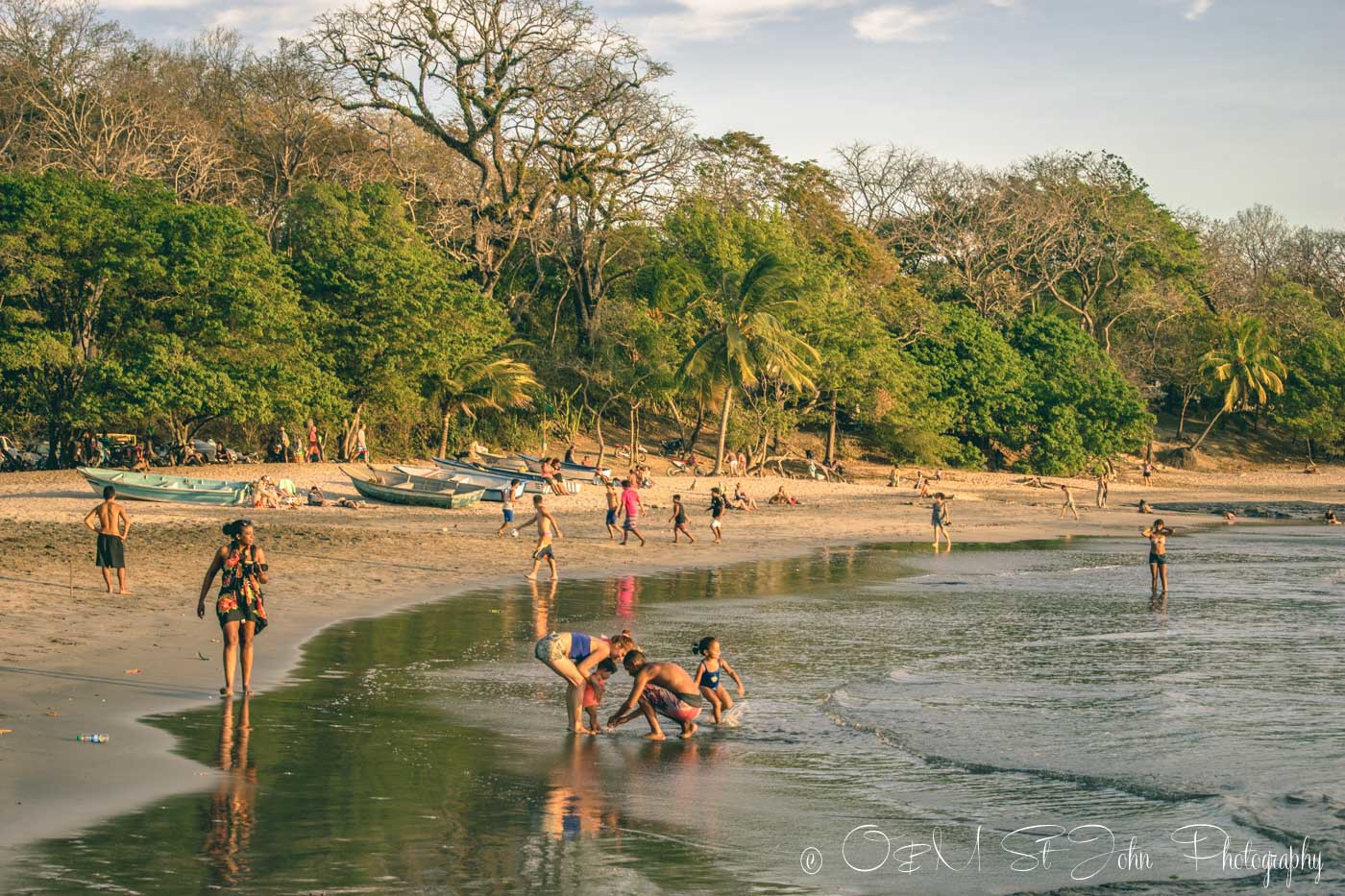
Gringos/Gringas
This is the term used throughout most of Latin America for Americans and more recently in reference to any white tourist (Yes, even us Canadians, eh).
Climate Zones
Costa Rica has twelve climate zones varying from hot and humid to cold and frosty. The best time to go to Costa Rica is anytime; it just depends on what you want to do on your holiday!
But if you are looking for some of those summer vibes on your visit to Costa Rica, make sure you visit the Guanacaste region. The yearly average here is 26-27°C (80 °F).
Or, check out the Caribbean Coast, which has a different rainy season than the Pacific Coast. On that side, it’s generally hot, humid, and rainy all year except for a short window between September and October.
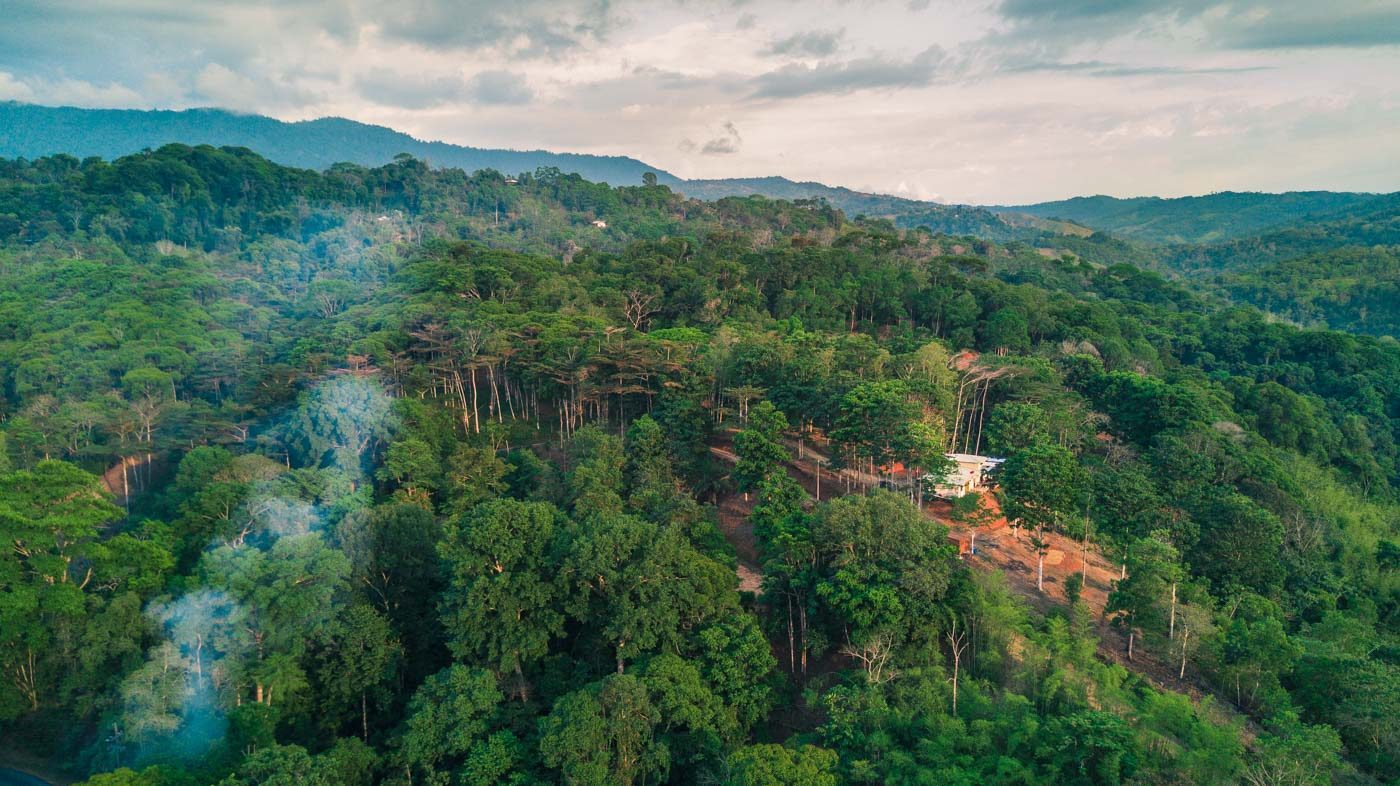
READ NEXT: Best Time To Visit Costa Rica
Bird Life
Costa Rica is home to some 894 different species of birds, 52 of which are hummingbirds. So don’t be surprised if you see a few right outside your room during your stay. Especially the clay-coloured thrush, or yigüirro, which is the national bird of Costa Rica.
The Osa Peninsula in the South of Costa Rica is known as one of the best spots in the country for bird watching. If you really want to see the unique birds of Costa Rica, head to Corcovado National Park!
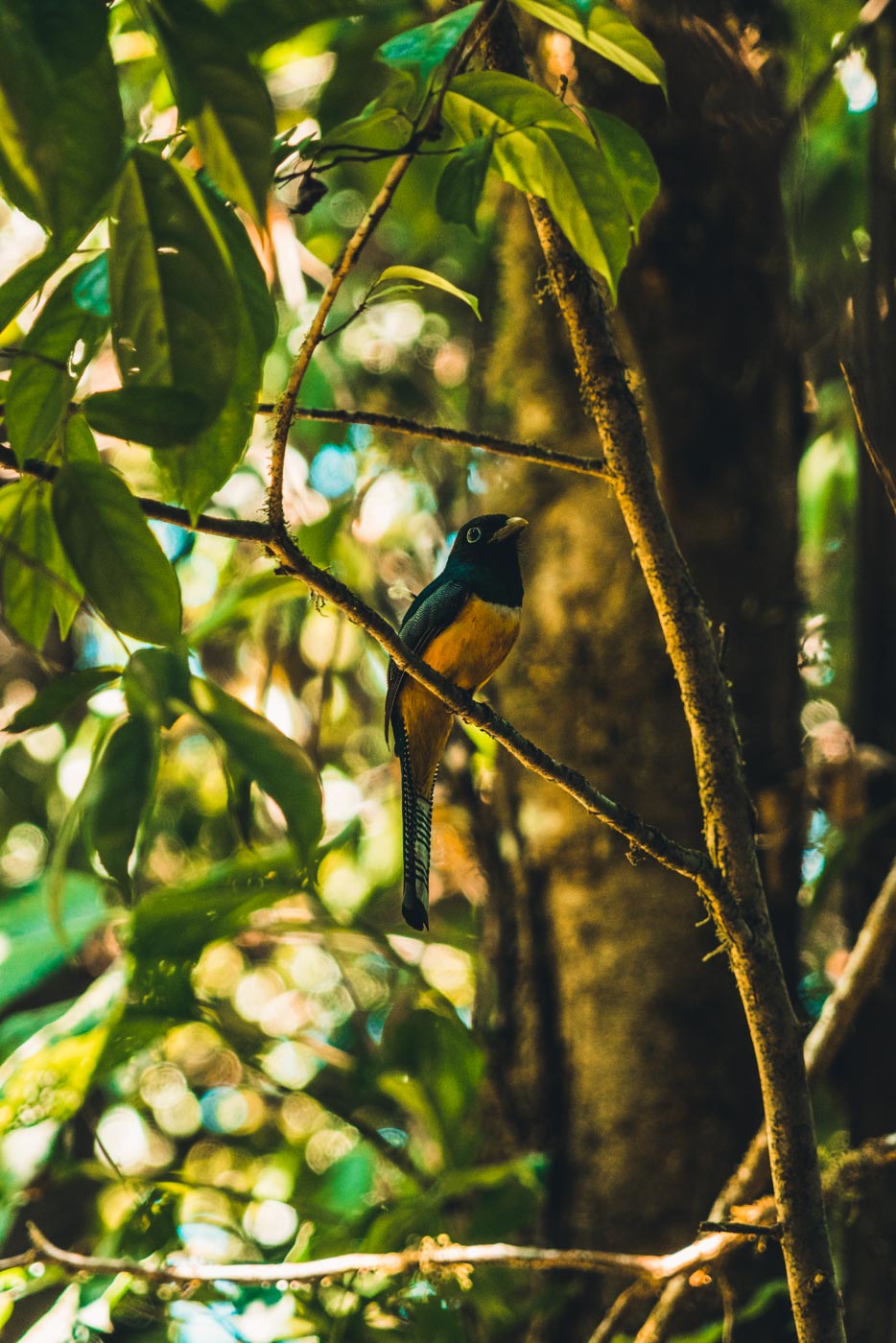
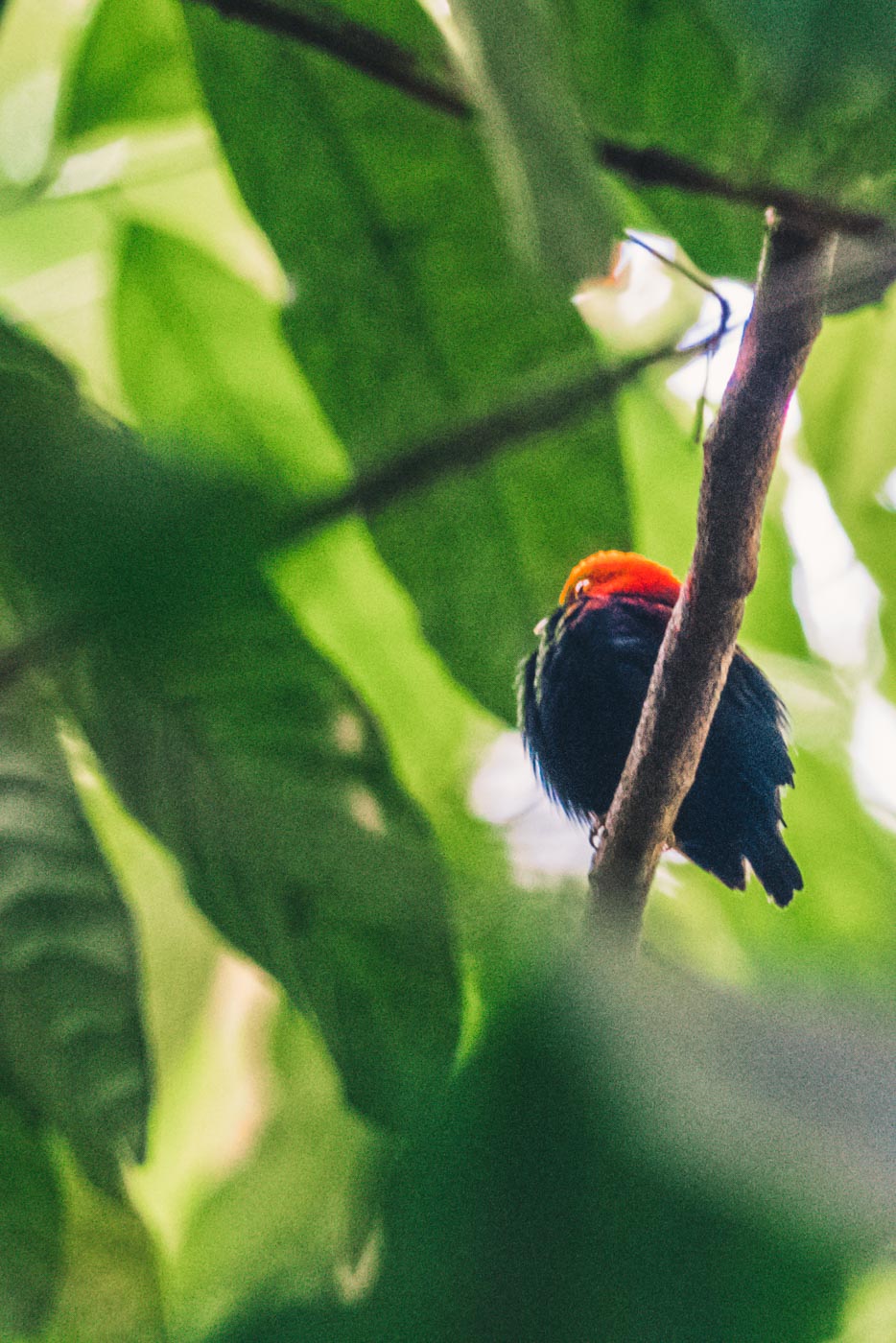
Orchids
The national flower of Costa Rica is the guaria morada, or an orchid. Over 1400 different types of orchids call Costa Rica home, many of which are so tiny they are tough to see with the naked eye.
If you want to learn more, check out the Orchid Garden, in Santa Elena, Monteverde. The staff there is super knowledgeable, and even though we are not botanists, we really enjoyed our tour of the garden.
One of the fun facts about Costa Rica we learned from the tour is that the smallest known orchid species in the world can be found here. Its scientific name is Platystele jungermannioides and it’s about the size of a dime!
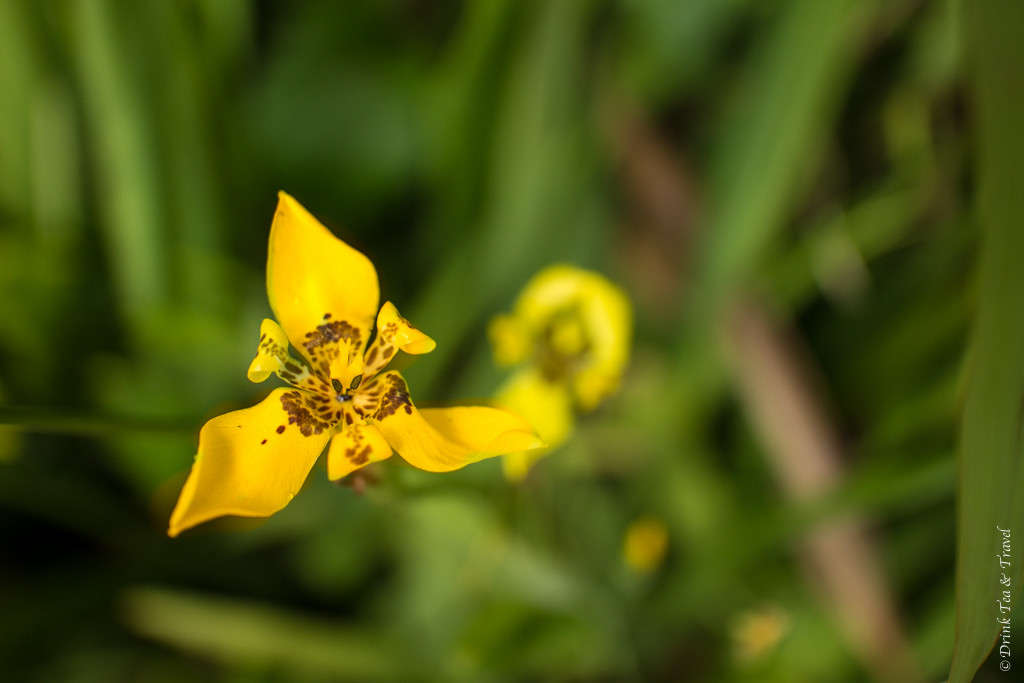
Biodiversity
Being situated in the middle of North and South America, Costa Rica is incredibly diverse in its plant and animal life. The forests are filled with mammals and reptiles, while the sea is teeming with marine life.
In fact, even being such a small country, Costa Rica makes up 5% of the world’s biodiversity. National Parks like Corcovado and Manuel Antonio National Park are great places to see wildlife in their natural habitats.
Beloved animals like sloths have grown to become national symbols of Costa Rica. It won’t be long before you realize why Costa Rica translates to “rich coast.”
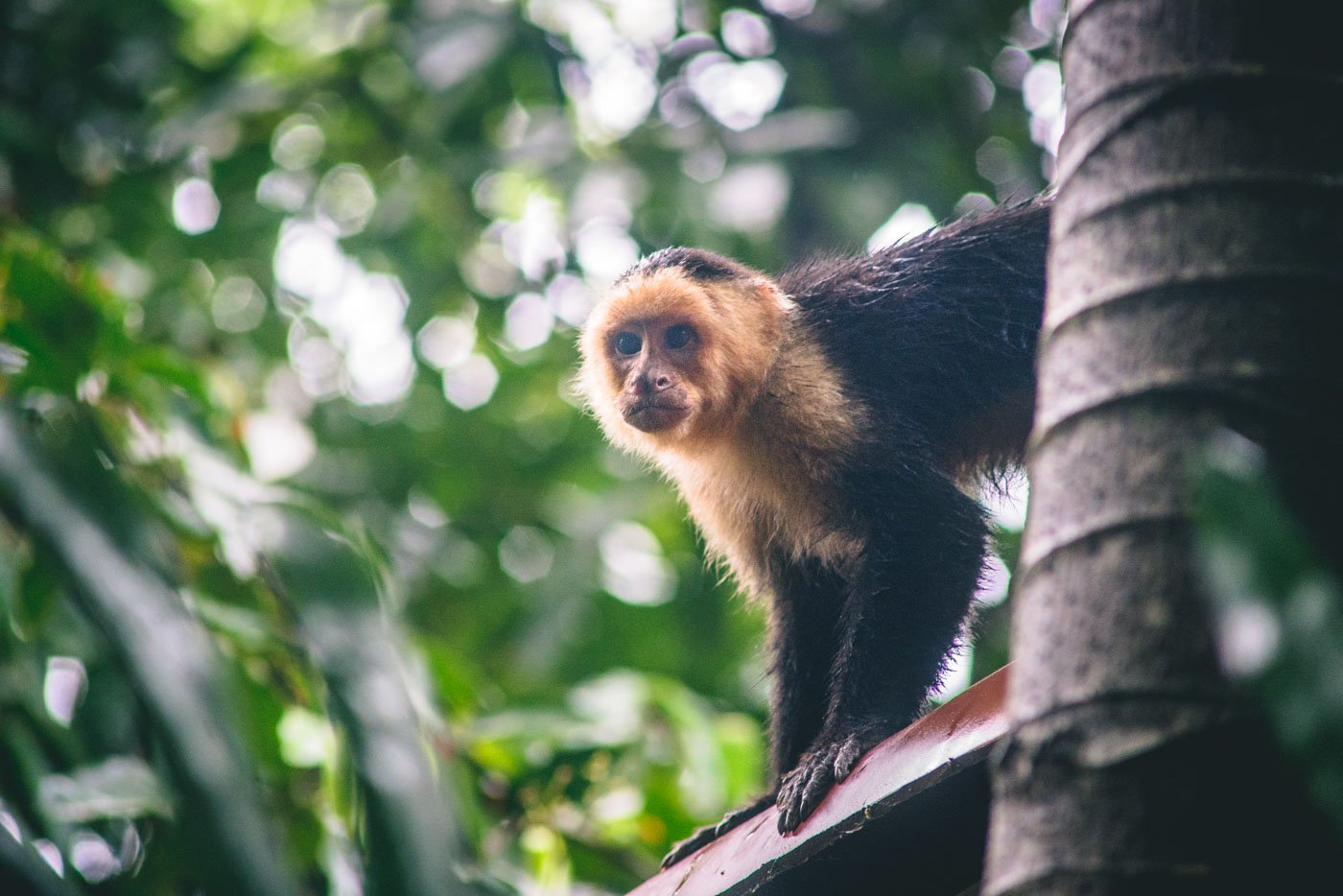
National Parks
Costa Rica is home to nearly 30 national parks, and three of them are designated as UNESCO World Heritage Sites. Namely, these are the Area de Conservación Guanacaste, La Amistad Reserve and National Park, and Cocos Island National Park.
The 30 national parks are spread all across the country, each offering different sites to see, from the active volcanoes of Arenal in Alajuela to the different sea turtles of Tortuguero National Park on the side of the Caribbean Sea.
These parks are important habitats for a variety of flora, fauna, and wildlife. If you visit Costa Rica, going to at least one of the country’s parks is an absolute must. There’s nothing like their amazing landscapes, diverse wildlife, and rich biodiversity.
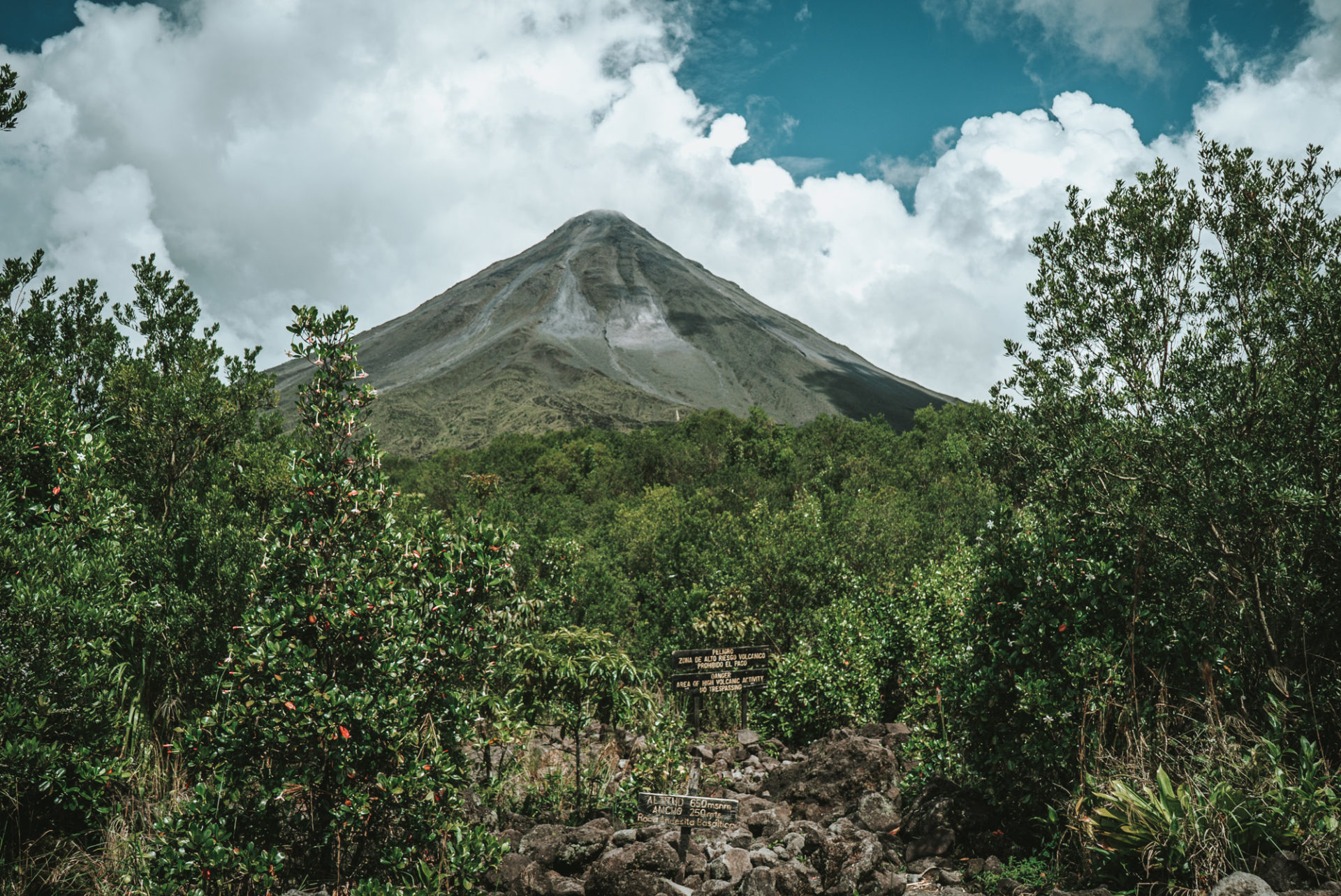
READ NEXT: The Complete Guide To Costa Rica National Parks
Fun Facts About Costa Rican Culture
Costa Rica has a rich, vibrant culture that blends its indigenous origins and Spanish colonialism with a dash of Afro-Caribbean thrown in for good measure. The culture can differ depending on the area you’re visiting, but no matter where you visit in Costa Rica, you’ll find warm people with a love for life. One thing’s for sure: Costa Ricans enjoy life to the fullest!
Pura Vida
This is one of our favourite facts about Costa Rica. Pura Vida is a term used regularly by locals and now more frequently by travellers hoping to fit in. The phrase “pura vida” literally translates to “pure life” and is a way of life for all Costa Ricans. When someone asks you how you are, it is not uncommon to simply reply “Pura Vida” to say everything is good.
You definitely feel that warm, happy vibe all over the country. According to previous surveys by the Happy Planet Index, Costa Rica is one of the happiest countries in the world. Must be that pura vida!
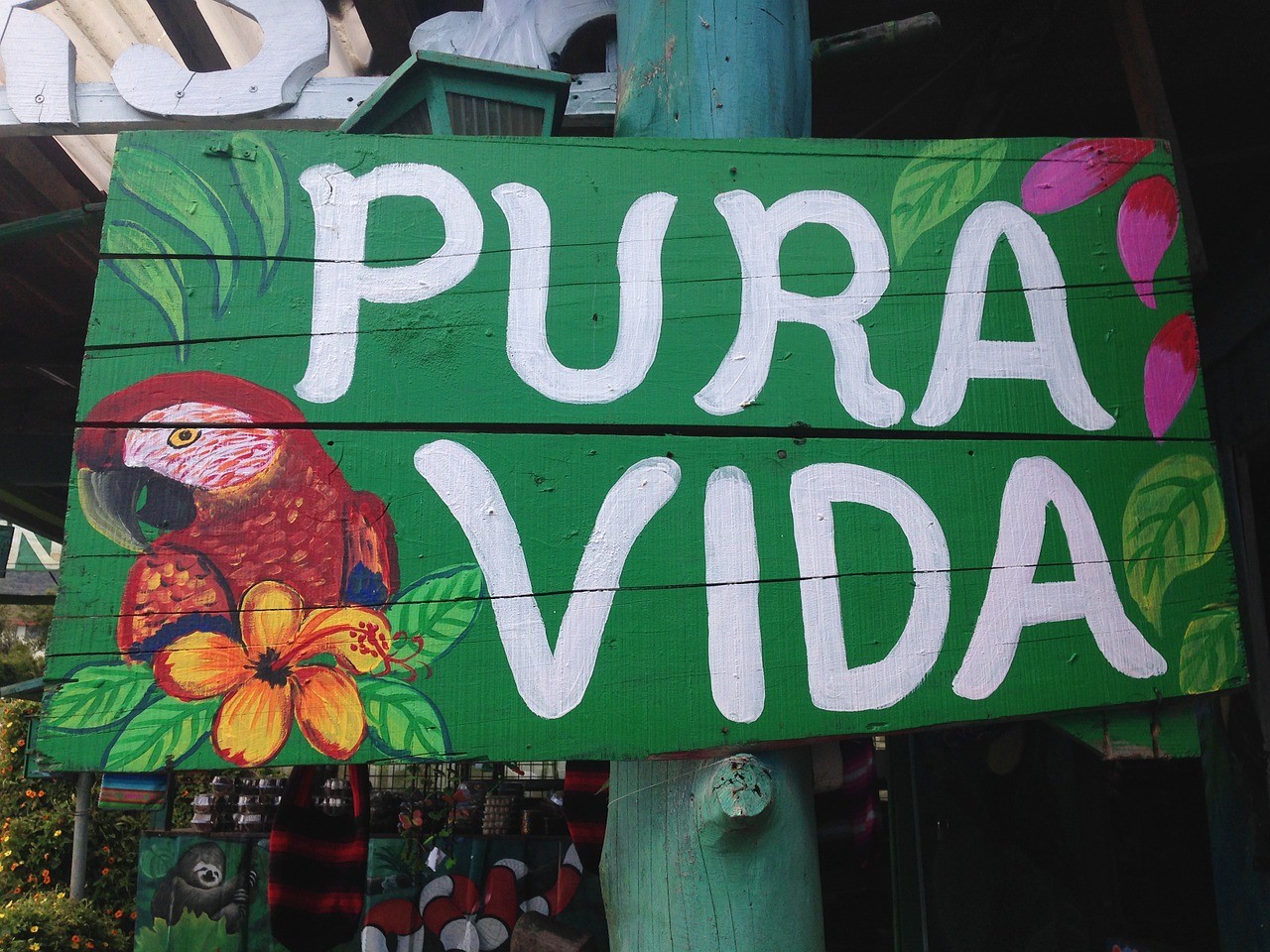
Surnames
Costa Rican women don’t take their husbands’ last names as is customary in Western culture. The children of the couple take both the father’s and mother’s surname in that order.
Fiestas
Throughout the year, many Costa Rican towns play host to local fiestas. These events feature carnival games, local food stalls, dodgy rides, horse parades, and, of course, bull riding competitions.
Bulls are not harmed during these events, and the highlights of the competitions are often the locals who jump into the ring and tease the bulls to show off their skills for the crowd.
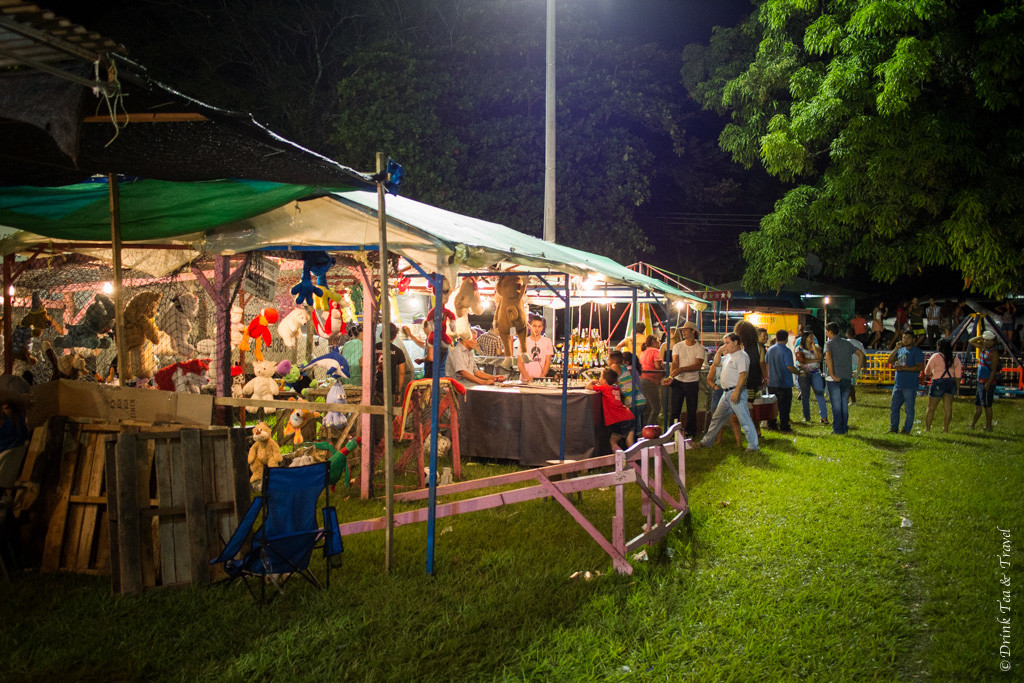
Soccer Fields
Every town, no matter how big or small, has its own soccer field and a school. Soccer is a way of life in Costa Rica, so if you are looking for a way to interact with locals, don’t be shy and join in during friendly weekly Sunday mejengas (slang for pickup game).
Fun Facts About Costa Rican Food
The cuisine in Costa Rica is certainly something to write home about! It is packed full of flavour, hearty, spicy, savoury and oh so satisfying, whether you choose to eat in the local eateries or fancier Costa Rican restaurants. Don’t forget to save these food facts as Costa Rica travel tips, too!
Gallo Pinto
Costa Rica’s national dish, Gallo Pinto, is a mixture of beans and rice leftover from the night before, mixed with some peppers, onions, cilantro, Lizano sauce, and other spices. It’s one of the few traditional Costa Rican foods that you must try here as it’s a big part of the Costa Rican diet. In Spanish, the literal translation for Gallo Pinto is “coloured rooster.”
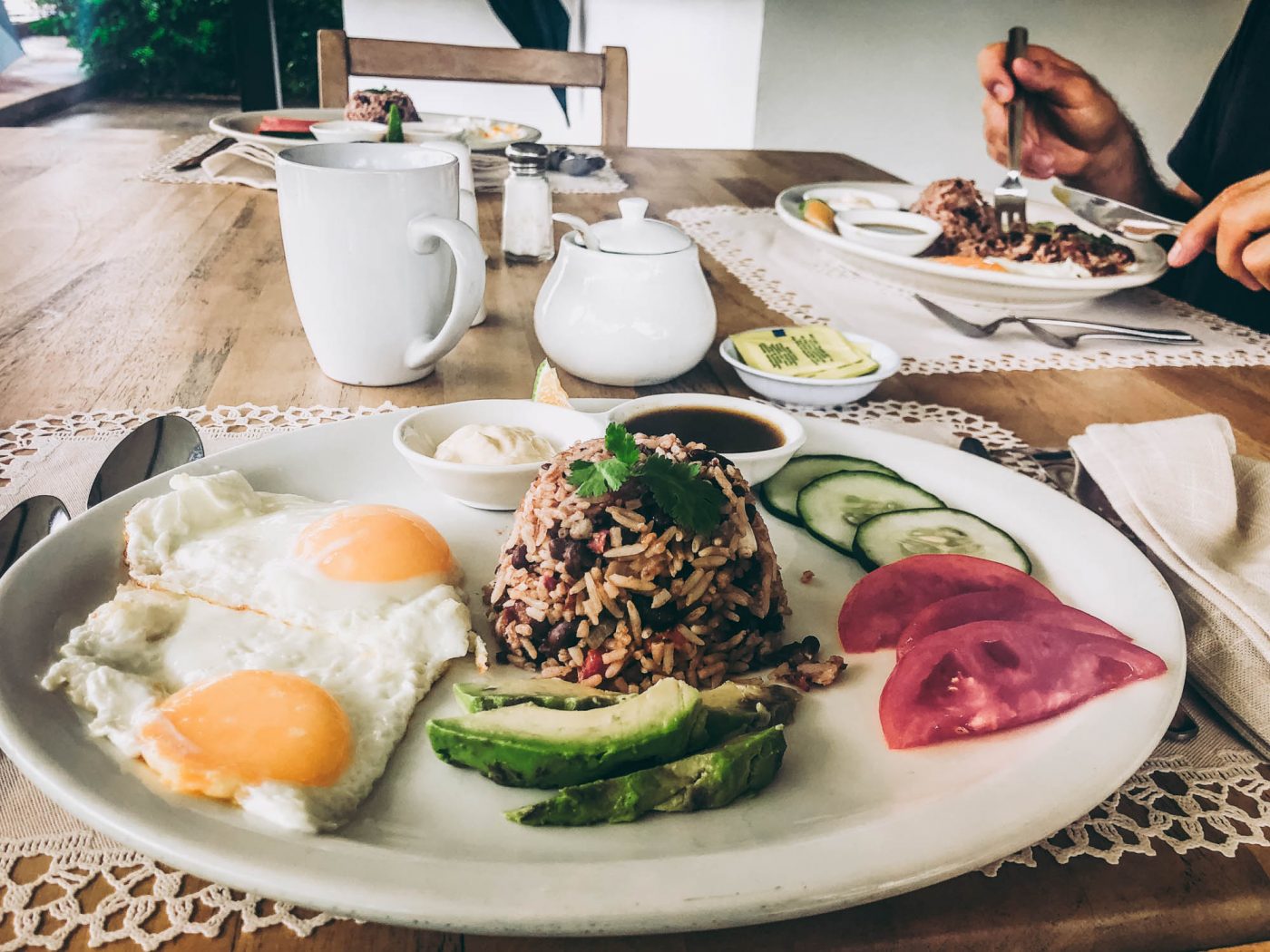
Soda
A soda is a small, informal restaurant that serves traditional Costa Rican dishes like a “Casado” (meat, rice, beans, and salad) and Gallo Pinto for as little as $3-$4 a plate. This is where the local Costa Ricans eat!
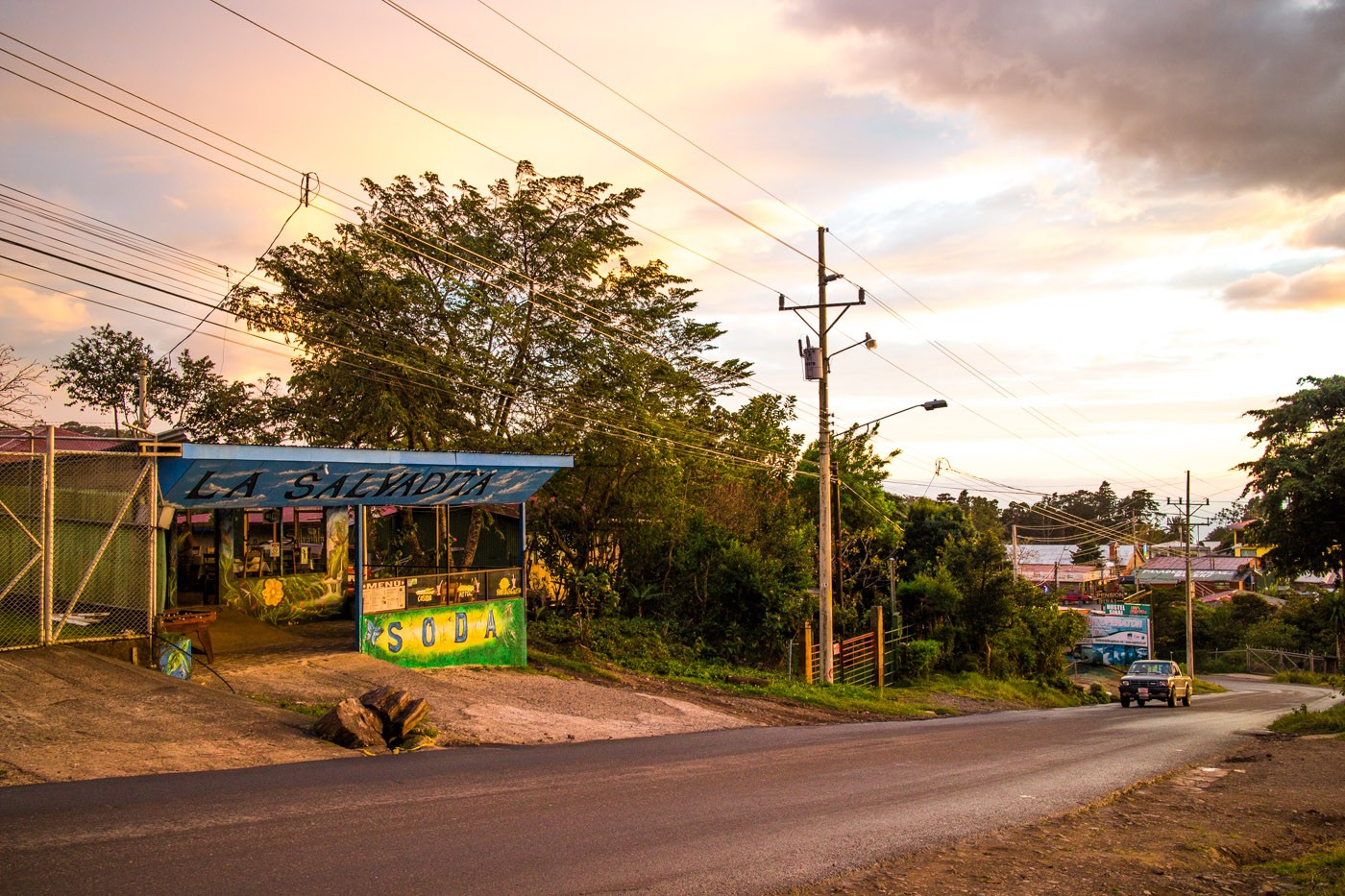
Pulperia
A pulperia is a neighbourhood convenience store that sells essential supplies food items like canned goods, eggs, milk, bread, and some produce. Almost every small town has a pulperia, but the prices at these shops are often marked up 10-20% for convenience.
Extra Interesting Facts About Costa Rica
Here are some additional facts about Costa Rica that you don’t normally find in travel guides. The country is so much more than a travel destination; it is also a pretty awesome place to live!
Isla Del Coco
Isla del Coco is the most remote part of Costa Rica, nearly 360 miles (600 km) into the Pacific Ocean, southwest of the mainland. It is well known for some of the best diving in Costa Rica and for pristine wildlife (think the Galapagos of Central America).
When this small Central American country hit the big screen, millions saw this island in theatres during the opening moments of the Steven Spielberg film Jurassic Park. At 8 miles by 3 miles (12 km by 5 km), Isla del Coco is the largest uninhabited island in the world. (We can’t wait to experience it one day!)
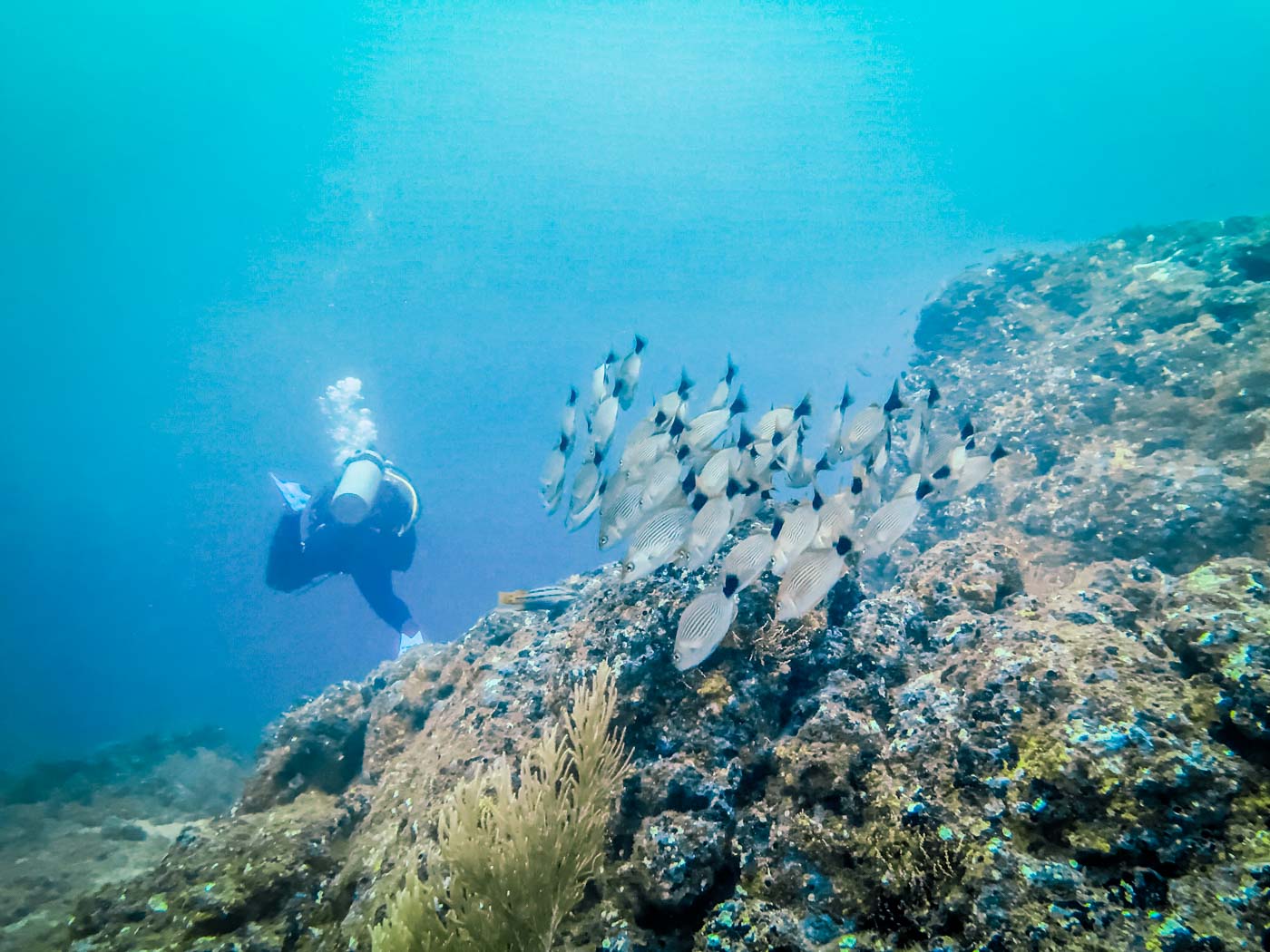
Average Wage
The average wage for general labour in Costa Rica is about $2/hour or $16/day, the highest in all of Central America.
Life Expectancy
A little-known health fact about Costa Rica’s population is that the life expectancy here is almost 77 years, one of the highest in the world. Costa Rica is also home to one of the 5 Blue Zones in the world.
Blue Zones are known as areas of the world where people live measurably longer lives. If you want to experience the Blue Zone for yourself, head to the Nicoya Peninsula on the Northern Pacific Coast of Costa Rica to see how the Costa Rican people live.
Toilets
In most parts of Costa Rica, toilet pipes are old and only 2” wide, and the majority still use septic tanks. This means that unless you are using a toilet in a 5-star establishment, it is likely that you will find a note on the wall asking you to put toilet paper in the bin instead of the toilet itself.
Sustainability
Some of our favourite Costa Rica facts are about how environmentally aware this Central American nation is. Thanks to its incredible biodiversity, it’s become a hub for eco-tourism. Even with being the most visited country in Central America, it still prioritizes conservation wherever possible.
Costa Rica generates over 99% of its electric power through renewable energy and aims to achieve zero net emissions by 2050. There’s a nationwide charging grid for electric cars and a slough of eco-lodges perfect for a responsible holiday.
READ NEXT: 10 Best Eco Lodges In Costa Rica
Weird Facts About Costa Rica
It’s true that Costa Rica is a unique country. Here are some weird and wonderful facts about Costa Rica that just add to its charm!
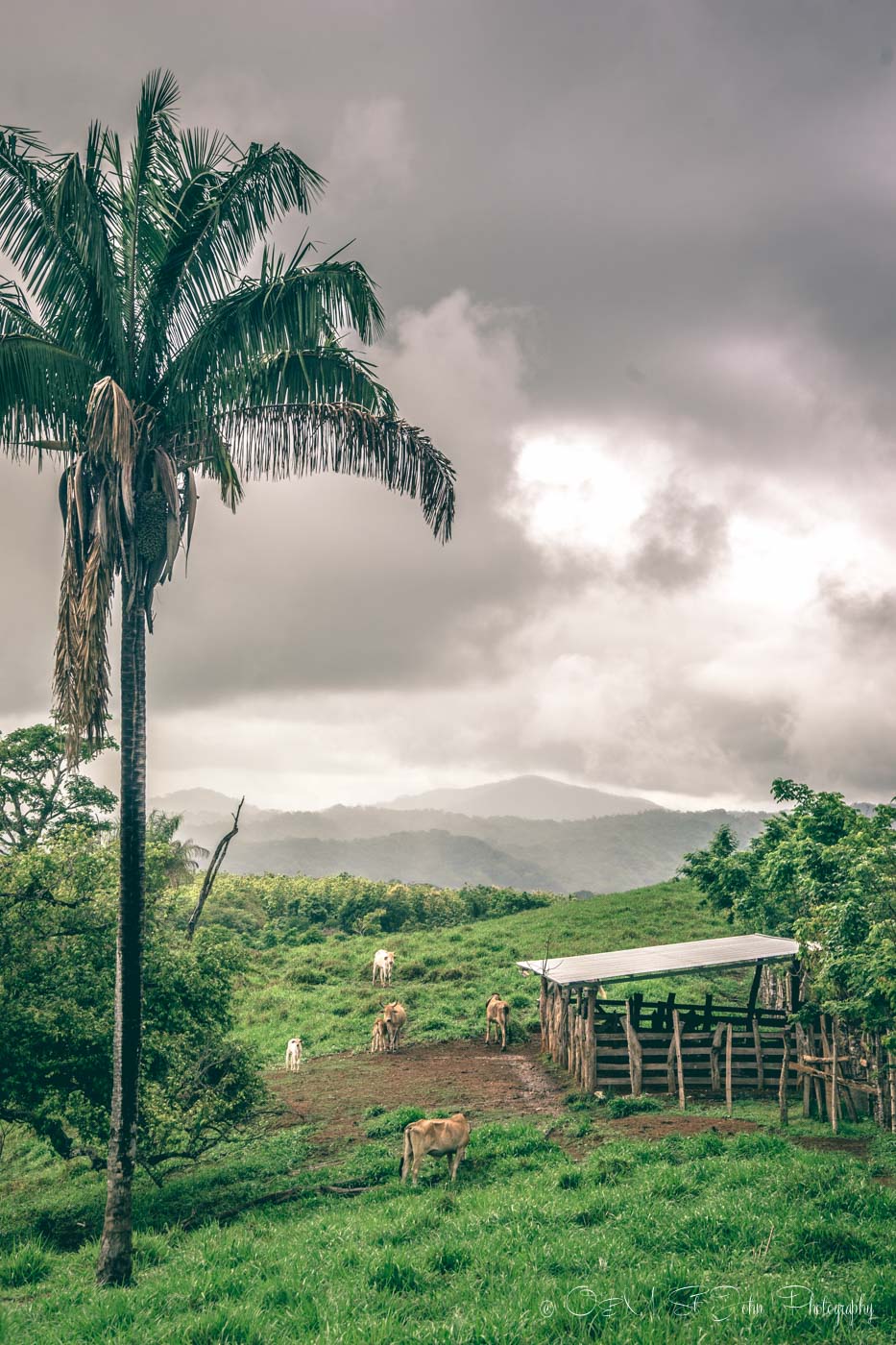

Army
Here’s a little tidbit about Costa Rican history: Costa Rica is one of the few countries in the world that has no standing army. The Costa Rican government abolished the army in 1948 after the civil war ended.
You’ll still see the Costa Rican flag proudly hung high as the national anthem chimes, but there is far less nationalism here than in other places.
Street Names
Unlike the Western world, Costa Rica does not use street names and does not have a postal code system. Before Google maps, navigation was challenging, and landmarks were used as waypoints.
There is some signage in the capital city of San Jose, but in many parts of the country, navigating is still tricky.
So don’t be surprised when your hotel address sounds something like this: “200m South of the tree that was hit by lightning last year, then 50m East. It’s the house in front of the house with the red gate.”

Locks
Don’t be surprised if the lock on your hotel room has to be turned the opposite way from what you are used to.
This is often because Costa Ricans only use one orientation of locks on doors, so if the door needs a different orientation of the lock, they simply flip it, causing it to lock and unlock in reverse.
Discoteca Vs Nightclub
Costa Ricans love a good party. But remember: when in Costa Rica, a discoteca is a nightclub, and a nightclub is actually a strip club. So make sure you ask for the right thing on your nights out!
If you’re looking for an exciting nightlife scene, San José is at the heart of it. The city offers a lot of variety, and you’re guaranteed to find a discoteca (or nightclub) that matches your vibe.


